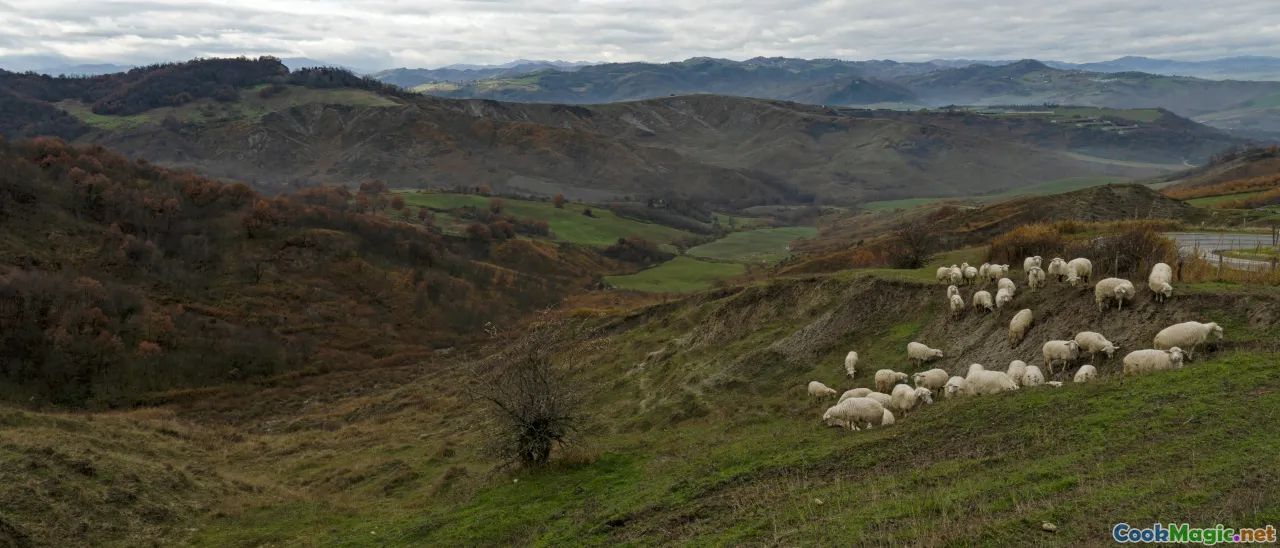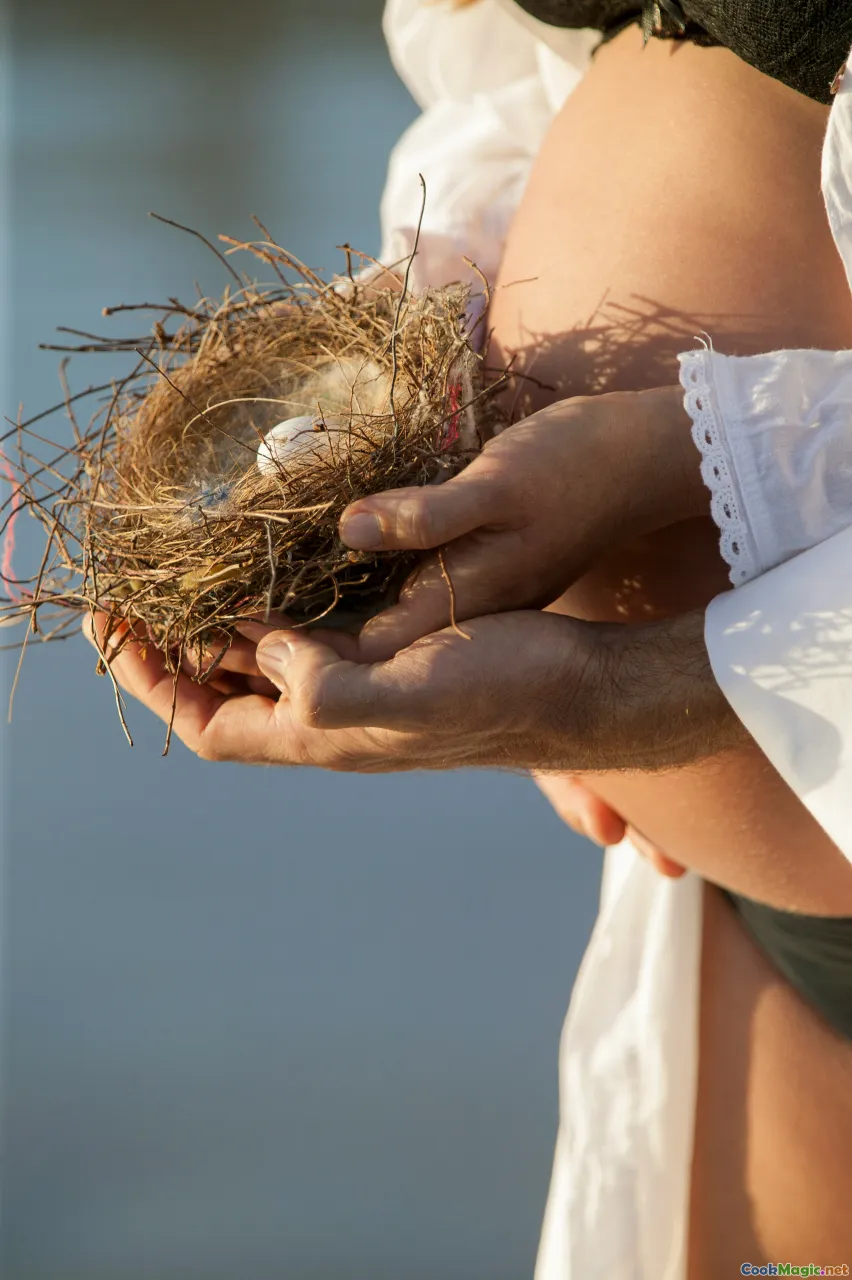Farm to Table Irish Ingredient Sourcing Demystified
45 min read Navigate Ireland’s farm-to-table landscape: meet growers, decode labels, shop seasonally, and source sustainable, traceable ingredients from coast to countryside for truly authentic, flavorful Irish cooking. October 04, 2025 09:10
The rain started before dawn, that fine Atlantic drizzle that beads on your coat and sharpens every smell. By the time I reached the Limerick Milk Market, the air was a collage: iron from wet railings, sweet steam from griddled blaas, the clean, grassy exhale of fresh-cut kale. A fishmonger slapped a fillet of silver-sided mackerel against the board and the aroma rose like a tide—ozone, salt, a lick of smoke from the stall next door where a man in a waxed hat handed out slivers of still-warm hot-smoked trout. A woman in a navy jumper passed me a paper cup of buttermilk, cool and sour, with a whisper of pasture in the aftertaste. This is how farm to table begins in Ireland: boots damp, notebook wet at the edges, ears open for the names that matter—fields, co-ops, coves, bays, breeds.
The phrase farm to table has been cajoled onto menus so often that it can feel more like a marketing garnish than a practice. In Ireland, it is simpler and grittier: a conversation in the rain. The clearing fog between you and a farmer’s hands. The moment you ask not just what’s fresh, but where, when, and who. I have stood under a striped canvas awning at the Midleton Farmers Market while a potato grower cut open a Wexford Queen still warm from the soil, the knife releasing a wet, mineral scent I could taste on my tongue. It’s the scent of place, and it’s the throughline of Irish cuisine when it is done with care.
This is not a guide to chasing a label or a trend. It’s a personal map for cooks who want to taste the island more honestly, to source ingredients at their best and to carry the stories with them into the kitchen. There will be rain. There will be laughter. There will be seaweed in your tote and dirt under your nails. And there will be meals that taste like granite warmed by the sun, like smoke turned to silk, like a field singing after a storm.
What Farm to Table Means in Ireland, Really

Farm to table is not a monolith here. It is a web. Fields, small abattoirs, co-ops, fishmongers in coastal towns, cheesemakers working in timbered rooms you can smell the moment you step through the door. It is Bord Bia Quality Assured beef that you trace to a specific farm, and it’s the woman at Temple Bar Food Market who grows twelve types of heritage greens and can tell you where the slugs hide after a downpour.
In the Irish context, the term spans:
- Direct buying from producers at markets like the English Market in Cork or St. Nicholas in Galway.
- Deliveries from small-scale farms, often organic-certified by the Irish Organic Association or the Organic Trust, or simply run with sustainable practices without certification.
- Coastal sourcing: mussels rope-grown in Killary Harbour, oysters from Carlingford Lough, lobster pots tagged by a boat you can name.
- Co-ops and family businesses: a mill that still stones oats (Macroom), a smokehouse turning salmon to coppery rose (Burren Smokehouse), a farmhouse that churns butter to a golden, grassy slab (Cuinneog).
It’s useful to demystify the labels. The Bord Bia quality mark signals traceability systems that, in practice, allow you to know the county and farm of origin of beef and lamb. PGI and PDO designations—like Connemara Hill Lamb PGI, Waterford Blaa PGI, and Oriel Sea Salt PDO—point to tightly defined places and practices. Organic certification in Ireland is straightforward to verify: ask to see the operator’s certificate and look for IOA or Organic Trust logos. In short, the label is the start of a conversation, not its end.
What’s truer than any logo is taste. Irish ingredients whisper their origin in two elements that repeat like a refrain: pasture and sea.
Soil, Salt, and Rain: The Flavor Engine of the Island

Stand on the Dingle Peninsula in late spring and you can hear the wind scissoring the grass. The soil is shallow in places, studded with stone that keeps warmth, and the pasture has a peppery, sweet smell after rain. Sheep graze lean hillsides salted by spray; cattle in lowland pastures nose clover and ryegrass, their breath a warm fog. From those two landscapes flow the flavors that define Irish cuisine when you keep it simple:
- Grass-fed dairy whose butter tastes of dandelion and sweet cream, that spreads like satin at room temperature and snaps with lactic brightness.
- Lamb and beef with clean fat that melts early, delivering a nutty, almost hazelnut sweetness if the animal was finished slowly on good pasture.
- Vegetables that keep the wet, mineral snap of their soils—carrots that taste like raw sugar and iron; cabbages that smell like rain on slate.
- Seafood that swings between brine and sweetness: mussels with a saffron-colored liquor, oysters with a coppery finish, crab like cold butter turned to silk.
These are not romantic exaggerations; they’re patterns you can cook toward. When rain is constant, grass is constant. When wind is constant, plants grow low, fragrant, and tough—deliciously so when you get them on a hot pan or under salt. The sea is very close to nearly everywhere. That proximity changes animals and people alike.
How to Source Like a Local Chef

Here is a practical, boots-on-stone guide to sourcing in Ireland the way chefs do—day by day, season by season.
-
Learn the names, then the faces. Start with markets: Limerick Milk Market (Fri–Sun), Temple Bar Food Market (Saturdays), Midleton Farmers Market (Saturdays), Galway’s St. Nicholas Market (Saturdays), English Market in Cork (daily, with permanent traders), Kilkenny’s Parade Market, Skibbereen Farmers Market. Introduce yourself. Ask what’s peaking this week, what’s glutted, what’s scarce.
-
Ask two questions of every producer:
- How did you grow/raise/catch it this week? Listen for details: pasture rotation, a storm that paused fishing, a flush of rain that swelled the leeks.
- How should I cook it today? A farmer will keep you honest. If the kale is tender enough to eat raw, do it. If the mackerel need the pan searing hot, heed that advice.
- Build a shortlist by category, then deepen it:
- Greens and roots: McNally Family Farm (North County Dublin) for organic leaves and herbs; Ballymakenny Farm (Co. Louth) for heritage potatoes whose skins shatter like thin glass; organic growers in West Cork such as Deelish or Gort na Nain.
- Dairy and cheese: Hegarty’s cheddar (Cork), Cashel Blue (Tipperary), St Tola goat cheese (Clare), Gubbeen and Durrus (West Cork), Young Buck (Antrim, just across the border), and Cuinneog butter (Mayo).
- Seafood: Killary Fjord mussels, Carlingford oysters, Goatsbridge Trout (Kilkenny), brown crab from Castletownbere, smoked salmon from Burren Smokehouse or Ummera.
- Grains and breads: Macroom oatmeal, Dunany Flour (Louth), Waterford Blaa from specialist bakers in Waterford.
-
Give yourself a logistics rhythm. Shop markets two days a week. Place one weekly order with a fishmonger you trust (they’ll text when the lobsters run heavy). Keep a monthly relationship with a butcher who understands breeds and aging—many Irish butchers will age beef 21–40 days on request.
-
Audit your labels without becoming sanctimonious. On meat, note the Bord Bia Quality Assurance and the country of origin. On packaged dairy, read for pasteurization status and milk source. On fish, check the tag: species, harvesting area, date. Ask your supplier to print or send you harvest info when it’s not visible.
-
Cook the peak, preserve the rest. Irish seasons swing between glut and lean. When Wexford strawberries arrive, make jam; when chanterelles flush in September, pickle; when mussels are tiny and sweet in spring, steam and freeze their liquor for chowders.
Markets That Matter: A Cook’s Map

-
English Market, Cork: A cathedral to provisions. Under a high, iron-latticed canopy, you’ll find tripe and drisheen (for the adventurous), game birds, a rainbow of fish, and some of the best sausages in the country. The smell is a quilt—cooking fat, brine, butcher’s spice. Stop by On the Pigs Back for cheeses and terrines, and bring home rashers that fry to a crisp hiss.
-
St. Nicholas Market, Galway: Between the church and the stalls, there’s a hum that feels like a reel being played under your feet. The fruit and veg are local and honest: soil still clinging, carrots tapering to a point like a pencil. Kai and Aniar chefs shop here; look for the farmers who know their clover by name.
-
Temple Bar Food Market, Dublin: Saturdays in Meeting House Square. The best thing is the concentration—you can assemble a meal on the spot. McNally Family Farm will sell you leaves that taste like pepper and sweetness at once; Bread 41 might put a warm sourdough in your arms; there’s often a stall with steaming bowls of something brothy to keep the chill out of your bones.
-
Limerick Milk Market: Covered, convivial, and pungent in the best sense. The fish stalls sing with the wet slap of ice. There is always something being griddled that smells like childhood—baps, blaas, pancakes slick with lemon and sugar.
-
Midleton Farmers Market, Co. Cork: Ballymaloe’s backyard market, in spirit. The vegetables are often dew-heavy; the lamb stalls can be exceptional. It’s a place to overhear recipes while you buy.
-
Skibbereen Farmers Market, West Cork: A sociable sprawl with smoke wagons and veg piled high. You’ll hear the sea in the distance if the wind is right, and someone will inevitably press a slice of cured fish or pudding into your hand.
If you travel north, the St George’s Market in Belfast (open Fri–Sun) is a cross-border trove: butter like gold coins, soda farls with the flour still dusting your fingertips, and fish counters that look like a mermaid’s pantry.
A Cook’s Seasonal Calendar of Irish Ingredients

Spring (March–May)
- Lamb: Sweet and pale, with a fat that softens early on the tongue. Connemara Hill Lamb (PGI) carries a wild herb note, the residue of gorse and heather.
- Wild garlic (ramsons): Crush a handful and the scent will hit you with a green, garlicky punch. Make a paste with Oriel sea salt and oil.
- Nettles: New growth is tender and smells of crushed green peas when blanched.
- Early potatoes: Paper-thin skins that flake under your thumb. Steam with dillisk and a knob of butter.
- Rhubarb: Knife-snap crisp, sour as a whistle, fragrant like roses when roasted with orange peel.
- Mackerel: The first runs are a jolt—oil-rich, metallic bright. Eat grilled with lemon and a mustard leaf salad.
Summer (June–August)
- Wexford strawberries: Warm from the sun, they smell like boiled jam before you even cook them. Their juice stains your wrist like watercolor.
- Peas and broad beans: Green sugar; skins like satin if young. Blanch and toss with mint.
- Oysters: Colder waters mean they stay firm; savor the copper and cucumber notes. Carlingford are plump and saline.
- Crab and lobster: Brown crab is custardy; lobster in July has sweet, translucent flesh.
- Courgette flowers: Stuff with St Tola goat cheese; fry until the batter goes freckled golden.
Autumn (September–November)
- Chanterelles and ceps: The color of fallen leaves, smelling of apricots and forest floor. Fry in butter until they sigh.
- Apples: Armagh Bramleys (PGI) for tarts; Tipperary and Kilkenny orchards for eating varieties like Katy and Discovery.
- Beetroot: Sweet as molasses when slow-roasted, bleeding amethyst on your board.
- Mussels: At their prime in early autumn, liquor golden and lightly saffroned, shells snapping in the pot.
- Game: Wicklow venison, wood pigeon. Lean, mineral, often hung lightly.
Winter (December–February)
- Kale, cabbages, sprouts: Frost-sweetened; steam until just tender and gloss with butter.
- Parsnips and swede: Candy when caramelized; roast until the edges go gnarly and brown.
- Smoked fish: Salmon and haddock. The smokehouse perfume turns the kitchen to a warm cabin.
- Oats: Macroom oatmeal for morning porridge; the fragrance is toasted nut and hay.
The trick is to think like a tide: run hard with the glut, slow cook through the lean. Your pantry is a boat.
Beef, Lamb, and the Quiet Pasture Revolution

Irish beef and lamb wear their pastures on their sleeves. The fat is clean, the meat is a little more mineral, a little more sweet than corn-fed counterparts. For beef, breeds like Hereford and Angus dominate, and the best cuts carry a yellowed fat from beta-carotene in grass. A 28-day-aged rib feels tacky to the touch, smells faintly of buttered toast and iron.
Sourcing notes:
- Ask your butcher for the farm and the hang: where was the animal raised, and how long was it dry-aged? A good butcher will beam and expound.
- Explore secondary cuts. Featherblade braises to silk, bavette grills with a deep, mineral thrum, and shin makes a stew that tastes like the earth after rain.
- For lamb, seek hill flocks from Connemara, Kerry, or Mayo if you like a herbaceous, leaner flavor, or lowland lamb from the southeast for a rounder, sweeter taste.
Cooking to honor the source:
- Beef rib: Sear hard, rest long. Finish with a tumble of peppery watercress and Irish rapeseed oil.
- Lamb shoulder: Slow-roast with bog myrtle and rosemary; baste with stout for a sticky glaze.
- Offal: Seek out liver from grass-fed cattle; slice thin, hot pan, onion gravy dark with porter. It tastes like the best of the past brought forward.
A quiet, sustainable shift is underway along the coast: small farmers supplementing winter feed with dried seaweed. It’s not a gimmick—it’s an old practice revived. The result is subtle: a cleaner fat aroma, a hint of iodine in the best sense.
The Atlantic on a Plate: Shellfish and Seaweed

If you want to understand Ireland by taste alone, stand in a Killary Harbour shed and watch mussels roll through brine. Rope-grown, fat, and fast-cooking. They open with a cough of steam that smells like the inside of a wave. Carlingford oysters flash silver when shucked, their liquor cool as rain. Brown crab from West Cork is custard in a shell.
Sourcing details that matter:
- Shellfish tags: Always ask the fishmonger for the tag info—species, harvest area, date. Keep them on file if you’re running a kitchen.
- Seasonality: Oysters are excellent year-round in Ireland’s cooler waters, but flavor deepens in colder months. Mussels are plump in spring and autumn. Crab and lobster ride a summer peak.
- Smokehouses: Burren Smokehouse (Clare) leans lightly smoked and silky; Ummera (Cork) can show a firmer texture. Taste both; the difference is like two dialects of the same language.
Seaweed is not garnish here; it’s pantry. Names to learn:
- Dillisk (dulse): Wine-dark sheets with a bacon-y, mineral chew. Tear into salads or crisp in hot oil to crumble over potatoes.
- Carrageen (Chondrus crispus): A gelling moss for puddings; simmer with milk, sugar, and lemon peel until the kitchen smells like seaside custard.
- Kelp (kombu): Add to stocks for depth; think of it as an amplifying bass note.
- Sea lettuce (Ulva): Electric green confetti; chop into butter for grilled fish.
Foraging tips: Go with a local guide on your first trips—West Cork and the Burren have excellent teachers. Cut, don’t pull; leave holdfasts to regrow. Avoid harvesting after heavy rain near rivers or outfalls. Rinse in seawater first, not fresh.
And a dish that bottles the Atlantic: steam Killary mussels with cider and a fistful of wild fennel; whisk in butter and stir through a spoon of chopped dillisk. Serve in a bowl that can handle the splash.
Dairy: Butter, Buttermilk, and Farmhouse Cheeses

Irish butter at its best is a gold bar that tastes of grass, flowers, and creamery air. Cuinneog’s farmhouse butter carries a cultured twang and a grain that spreads cleanly, leaving a grassy perfume. The old trick with boiled potatoes—a fist of butter melting into a fluffy wreck—becomes something more when the butter sings.
Buttermilk is not a leftover; it’s a star. The smell should be fresh hay and yogurt. Use it to poach chicken gently, to give soda bread its tender crumb, and to whisk into a dressing with chive and preserved lemon that tastes like a hedge in June.
Cheeses to chase:
- Cashel Blue (Tipperary): Creamy, mushroomy blue with a gentle bite. Pairs like a dream with pears, honey, and walnut soda bread.
- Hegarty’s cheddar (Cork): Crumbly, savory, with a long finish of toasted nuts and broth.
- St Tola (Clare): Goat cheese that can be lemon-bright and fresh or deep and resinous when aged.
- Gubbeen and Durrus (West Cork): Smear-ripened, meadow-scented, with that washed-rind barnyard whisper that softens to cream on warm bread.
- Young Buck (Antrim): A blue with swagger—salty caramel and iron—delicious crumbled over charred cabbage.
Raw milk is largely the domain of cheese; farmhouse raw milk cheeses in Ireland are a masterclass in microclimate. Visit a cheesemaker if you can. The make-room smells like sweet steam, copper, and damp wood. The curd breaks under your finger with a squeak and then relaxes. It’s a lesson in time and temperature you can taste months later.
Roots and Greens: Heritage Varieties and the People Who Grow Them

The first time I cooked Ballymakenny Violetta potatoes, I thought someone had dropped amethyst into the steamer. The skins were glossy purple-black; the flesh held its color after cooking—earthy, chestnut-sweet. Farmers like Ballymakenny have put fun back into the potato with varieties like Mayan Gold, Pink Fir Apple, and Apache. There’s also a return to the Lumpers—more for history than everyday cooking, but they mash like a memory of old Ireland.
Leaves and roots worth learning by name:
- McNally Family Farm’s winter salads: bitter and sweet, with mustard blossoms that crunch like watercress and taste faintly of horseradish.
- Clare carrots grown in stony fields: they roast to molasses and iron.
- Red Russian kale that tastes of winter sunlight when charred and dressed with vinegar.
The Irish Seed Savers Association in Scariff, Co. Clare, guards heritage apples and veg. Visit if you can. Their orchards smell like cider and grass, and you’ll meet apples with names like Kerry Pippin and Irish Peach—old flavors that snap like new ones.
Cook green like you mean it: grill cabbage quarters until the edges char and the cores sweeten; splash with apple cider vinegar and a dice of Gubbeen bacon. Slice raw kohlrabi into matchsticks and toss with dill and sour cream for a salad that crunches like a winter walk.
Grains and Ferments: Oats, Blaas, and Bread That Remembers

Macroom oatmeal is a revelation: coarse, nutty, with a roasted aroma that fills the kitchen like someone toasting hazelnuts and drying hay at the same time. Cook it slow with water and a pinch of salt; finish with buttermilk and a trickle of cream. The spoon should lean.
Soda bread is not an apology for not having yeast. It is a quick bread that captures the sour of buttermilk and the crunch of heat. The crust should go from chestnut to almost black in spots, the crumb be tender but sturdy. Slather in butter; sprinkle with Achill Island sea salt; listen to the crust crackle as it cools.
Waterford Blaa—soft, flour-dusted rolls with a faintly sweet, yeasty perfume—carry PGI status and a texture that begs for bacon and brown sauce. Tear one open while it’s still warm and the steam will smell like a bakery at six in the morning.
Stoneground flours (seek out Dunany Flour from Louth) lend heft to breads and pastry. Ferment when you can: sourdough brings out the tang in Irish wheats, and a spoon of stout in a batter will give it the warm hum of malt.
Foraging With Care: Nettles, Wild Garlic, Sea Beet

Foraging in Ireland is as much etiquette as enthusiasm. Land is not common by default; ask, always. Go with a guide first—on the Burren for sea vegetables, in Wicklow for mushrooms, in Kerry for hedgerow treasures.
Spring is the time to fill a basket with:
- Wild garlic: The leaves make a paste that smells like crushed scallion and spring rain. Blitz with rapeseed oil, Oriel sea salt, and toasted hazelnuts.
- Nettles: Gloves on, tops only. Blanch; the scent turns from sting to sweet spinach. Soup it with potato and a splash of cream.
- Sea beet: Succulent, salty leaves at the tide line; sauté with butter and lemon.
- Sorrel: Lemon in leaf form. Slice into buttermilk dressings.
Mushrooms demand precision. Chanterelles smell like apricots; ceps like clean earth and walnuts. Use a brush, not water. Fry in butter that foams and hazelnuts that pop. Add black pepper and a squeeze of lemon to sharpen the edges.
Safety rules: Cut, don’t yank. Leave more than you take. Avoid picking within 48 hours of heavy rain near river mouths. Know your tides. If in doubt, leave it.
The Pub as Pantry: Stout, Cider, and Whiskey as Ingredients

Ireland’s drinks are not just to be sipped; they are to be stirred into dinner.
- Stout: A reduction of stout with treacle and mustard makes a glaze that gives lamb a dark, coffee-bittersweet shell. In a beef stew, stout does what night does to the sky—deepens it.
- Cider: Dry Irish ciders (seek Stonewell in Cork, Mac Ivors in Armagh, or Killahora in Cork) steam mussels into an anise-kissed broth if you add fennel fronds. They cut pork fat like a clean blade.
- Whiskey: Irish whiskey is fruitier than many Scotches; it smells of orchard and vanilla. Use a splash in a brown-butter sauce for scallops; flambé for drama and a sigh of caramel in the air.
Brown breads with stout become almost black, pruny, and moody. Cider jellies with Bramley apples set in a tremble that tastes like September. Whiskey in cream for an affogato over brown-bread ice cream—modern, old, and perfect.
Logistics Without the Glamour: Ordering, Traceability, Labeling

Romance meets reality at the back door. Keep a cold chain like your reputation depends on it—it does.
- Cool boxes and ice packs are your religion for markets. If you’re sourcing shellfish, bring a separate box and keep it cold, dry, and shaded.
- Label audits: On meat, note the oval health mark with IE and a plant number; on fish, file shellfish tags by date. Keep invoices tied to batches.
- HACCP isn’t just for inspectors; it’s your memory. Log delivery temperatures and supplier info. When a diner asks where the lamb came from, you’ll answer with county, farm, and a smile.
- Platforms to know: NeighbourFood hubs across the country let you order directly from producers and collect weekly. It’s farm to table in click-and-collect clothes.
Traceability wins trust. The Belfast chef who slips you a phone number for a raspberry grower in Carlingford will also ask, a month later, how the jam set. Be ready to answer.
Plates That Tell the Story: Dish Ideas and Menus

A dish should taste like the weather. Here are plates that carry their sourcing in their bones:
-
Early potatoes with dillisk butter and Achill sea salt: Steam Wexford Queens until the skins blister and flake. Toss with butter mashed with chopped dillisk and lemon zest. Finish with flaky Achill salt. They smell like a hot rock by the sea.
-
Rope-grown mussels, cider, and fennel: Sweat shallot in butter until translucent, add cider and a pinch of Oriel salt, then mussels. When they open, stir in chopped fennel fronds and a tablespoon of cream. The broth is pale gold and smells like an orchard after rain.
-
Lamb shoulder, bog myrtle, and stout glaze: Slow-roast with garlic and a sachet of dried bog myrtle. Reduce stout with treacle until syrupy; brush and blast under high heat. Serve with charred cabbage and a spoon of potato champ—the scallions giving a sweet bite.
-
Smoked trout, rhubarb, and sorrel: Flake Burren smoked trout; fold into a salad of thin-sliced forced rhubarb and sorrel leaves. Dress with rapeseed oil and honey. The plate is a conversation between smoke and acid.
-
Waterford blaa with Gubbeen bacon and apple mostarda: Crisp bacon until the kitchen smells like a Sunday morning; tuck into a split blaa with mustard greens and a sticky apple condiment spiked with mustard seeds. Devour.
-
Colcannon with brown butter and hazelnuts: Kale and potato mashed until velvet, drowned in a nut-brown butter that smells like toasted biscuits. Scatter hazelnuts and spring onions.
-
Buttermilk panna cotta with elderflower and Wexford strawberries: Set a wobble of panna cotta; spoon over macerated berries and a drizzle of elderflower cordial. It tastes like an Irish garden at dusk.
-
Oatcakes with Cashel Blue and honey: Warm oatcakes until they scent the air like porridge; top with a smear of blue and a thread of local honey.
Menu writing tip: name the place, not the brand. Killary mussels, Ballymakenny potatoes, St Tola goat cheese. The place is the flavor.
People Behind the Produce: Faces, Fields, and Boats

Farm to table is human. I can still feel the handshake of a mussel farmer in Killary—callused, knuckles roughened by rope and salt. His name was Damien. He wore a navy knit hat and smiled with his eyes. He told me he checks the ropes at dawn, and that the best day is when the sea is glass and the mussels pull heavy.
In Clare, Siobhán at St Tola goat farm laughed as a kid nosed my pocket. The cheese room was cool and damp; wheels glowed pale. She broke a slice that smelled of lemon pith and clean straw. It tasted like a hymn to goat and grass.
In Galway, at Kai, Jess Murphy stands at the pass with a grin that could split rainclouds. The plates are built from market finds: beetroot, salt-baked until it crushes under a spoon like jam; mackerel deemed too beautiful to hide. At Aniar, JP McMahon writes menus that read like a poem to the Burren, to sea, to bog. Both cooks remind me: cook what’s there, cook it true.
At the English Market in Cork, there’s a butcher who knows my weakness for beef shin. He smiles when I ask for it, because he knows I’m the sort who wants the wobble of gelatin and the way the house smells halfway through a long braise. And at a stall in Midleton, a woman in a yellow raincoat pressed an apple into my hand with a conspiratorial whisper: these are from an old tree that only sets fruit when the wind is just so.
Cost, Ethics, and the Realities of Scale

Farm to table can be expensive if you treat it as boutique shopping. It becomes sustainable when you switch from trophy cuts to whole-animal thinking, from strawberries in January to a glut menu in June, from fillet to flap.
Strategies that keep the ledger kind:
- Off-cuts and odd bits: Beef shin, lamb breast, pork jowl. Flavor lives where patience is required.
- Cross-utilize: Use mussel liquor in a chowder the next day; pickle rhubarb trimmings for garnishes; blitz beet greens into a pesto.
- Preserve the glut: Jams, pickles, fermented cabbage. Irish kitchens have always leaned on the larder when the winds rise.
- Pay a fair price and buy seasonally heavy: When carrots are cheap because the ground gave too many, buy more. Store them in a sand box in a cool shed. Eat them like candy all winter.
Ethics are not a bonus; they’re the core. Ask about animal welfare, slaughter conditions, and fishing methods. Support rope-grown mussels—they filter water and require no feed. Celebrate small smokehouses that use real wood, not liquid smoke. Trust is the currency that keeps the island fed.
Tools of the Trade: What to Carry and Why

You can spot a serious cook at an Irish market by the kit:
- A sturdy tote that laughs at rain, and a cooler bag with ice blocks for fish and dairy.
- A small notebook and a pencil that writes when damp; names and phone numbers matter in the long run.
- A sharp, folding knife for trimming greens and cutting samples. Ask before you cut.
- Tea towel, because you will be handed something warm or wet and grateful.
- Cash. ATMs are not always within sprinting distance.
At home: a dehydrator for seaweed and mushrooms, a fermentation crock, a good sieve for carrageen puddings, and a cast-iron pan that can go from searing mackerel to baking a soda farl.
A Rainy-Day Epiphany

There was a storm the night I learned what this all was for. The wind strafed the house. Rain rattled the windows like pebbles. I had a net of Killary mussels, a small smoked haddock, a leek that smelled like clean dirt, and a fist of dillisk drying by the stove. I chopped the leek and sweat it in butter until it sighed. In went the mussels with a mug of cider. They opened like eyes. I pulled their meat, strained the broth, added milk and a flake of smoked haddock that leached ivory threads into the pot. A potato, diced, softened and thickened the chowder. I chopped dillisk and stirred it in at the end, finishing with pepper and a squeeze of lemon.
The kitchen smelled like storm and hearth—smoke, sea, sweet milk. The spoon carried everything I’d touched that week: the fishmonger’s slab, the market’s chatter, the damp of the morning, the stubbornness of a farmer under a striped awning, the slap of rain on the quay. That bowl was the island rendered edible. That is farm to table here: not a trend, a practice; not a slogan, a promise—made again, in the rain, at dawn, with both hands.
The next morning, the market awnings were still billowing and the ground was a patchwork of puddles. I bought carrots that gleamed like lacquered wood and apples that smelled like late sun. The rain had cleaned everything. I walked home with my tote cutting into my shoulder, thinking about lamb in the oven and sea salt in a small jar, and the way place, when you let it, cooks for you as much as you cook it. Ireland will do that if you listen: it will tell you what to make, when, and why. All you have to do is show up, ask, taste, and carry those answers back to the stove.









